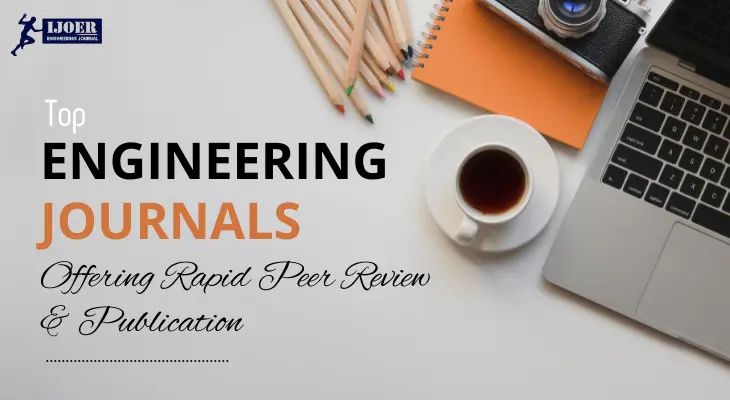
For researchers and academics, timely publication is more than a convenience — it’s essential. Whether you're pursuing a PhD, working in R&D, or building an academic portfolio, fast publication can significantly impact your career. Fortunately, many reputable engineering journals now offer rapid peer review and quick publication timelines without compromising quality.
In this blog, we explore some of the top engineering journals known for their efficient review processes and fast-tracked publishing — ideal for those seeking to disseminate their work promptly.
Fast publication offers several advantages:
For PhD students and early-career researchers, journals with fast timelines can reduce delays in thesis submission or job applications.
While choosing the right journal is crucial, your submission process also plays a vital role in ensuring rapid publication. Here's how to increase your chances of getting published quickly:
Every journal has its own formatting, referencing, and structural requirements. Ignoring these details can lead to unnecessary delays or outright rejection before peer review.
Tip: Download and use the journal’s manuscript template if provided.
A clear, concise, and error-free manuscript leaves a strong first impression. Ensure your paper is thoroughly proofread, logically structured, and professionally formatted.
Tip: Use tools like Grammarly or seek help from professional editing services.
Your cover letter is your pitch to the editor. Clearly mention what makes your research unique, how it advances the field, and why it's relevant to the journal’s scope.
Tip: Tailor each cover letter to the journal you’re submitting to — avoid generic content.
The revision phase can often cause delays. To speed things up:
Tip: Attach a response letter detailing how you addressed each comment.
Some journals have limited publication cycles (quarterly or bi-annual), which may delay the final appearance of your paper. Instead, target journals that:
Tip: Look for journals with a digital-first approach for quicker indexing and visibility.
Fast publication doesn’t mean low quality. The journals mentioned above combine speed with academic integrity, making them excellent choices for researchers eager to share their innovations with the world. Always balance speed with reputation and peer-review standards when selecting a journal for your work.
1. What are fast publication journals in engineering?
Fast publication journals offer shorter peer review and publishing timelines—often completing the process within 2–6 weeks. They’re ideal for researchers needing quick dissemination of results.
2. Do fast peer-reviewed journals compromise quality?
Not necessarily. Many reputable journals maintain high standards even with rapid processing. Always check the journal’s indexing, editorial board, and peer-review transparency.
3. How do I find fast publication journals in engineering?
You can search databases like Scopus,Web of Science, or the journal’s official website. Look for journals advertising fast-track processing, monthly issues, or rolling submissions.
4. Is there an additional fee for fast-track publication?
Some journals charge extra for expedited review, while others include it in the standard processing fee. Always review the journal’s APC (Article Processing Charges) section.
5. What increases my chances of fast publication?
Submit a well-structured manuscript, follow submission guidelines, write a compelling cover letter, and respond promptly to reviewer comments. Target journals known for fast publishing cycles.
6. Are these fast-track journals suitable for PhD students?
Yes. Publishing in such journals helps PhD candidates meet submission deadlines, apply for grants, or share timely research during their academic journey.
7. How long does rapid peer review usually take?
It varies, but most fast-track journals offer decisions within 2 to 4 weeks, with publication in 1 to 2 months, depending on revisions and journal workflow.
8. Can I publish review articles quickly too?
Yes, many fast-publication journals also accept review papers, provided they are well-cited, concise, and follow the journal’s structure and referencing format.
9. Are all fast publication journals open access?
Not all, but many fast-track journals are open access. Always verify if the journal provides DOI, is indexed in known databases, and maintains ethical standards.
10. What red flags should I watch out for?
Avoid predatory journals that promise unrealistic publication timelines, lack peer review, and aren’t indexed in Scopus, Web of Science, or DOAJ. Do background checks before submitting.

|
Citation Indices
|
All
|
Since 2020
|
Citation |
2359 |
1680 |
h-index |
19 |
15 |
i10-index |
57 |
24 |
|
Acceptance Rate (By Year)
|
|
|
Year
|
Percentage
|
|
2023
|
9.64%
|
|
2027
|
17.64%
|
|
2022
|
13.14%
|
|
2021
|
14.26%
|
|
2020
|
11.8%
|
|
2019
|
16.3%
|
|
2018
|
18.65%
|
|
2017
|
15.9%
|
|
2016
|
20.9%
|
|
2015
|
22.5%
|